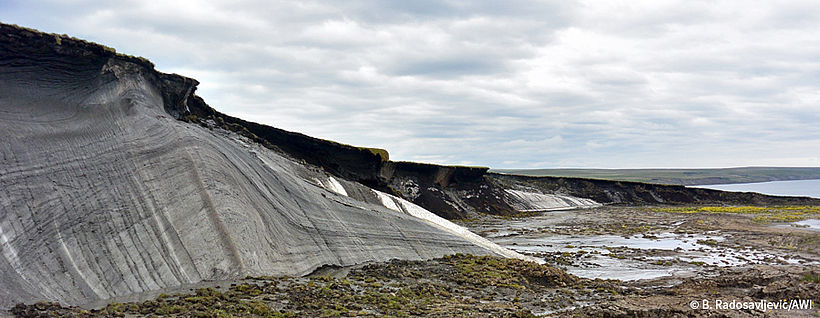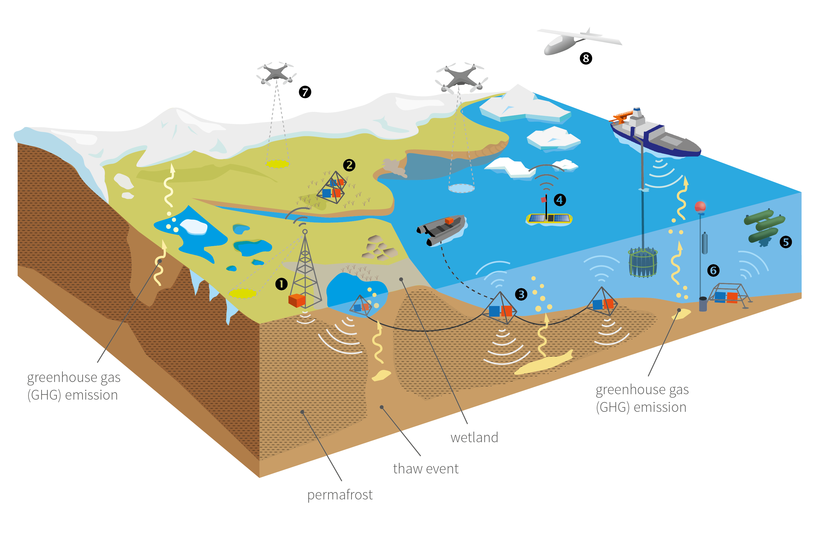
Event Campaigns
Permafrost thaw events are investigated from spring until late autumn in the Arctic regions because this is where the permafrost-greenhouse gas feedback/vulnerability is expected to be highest and where existing long-term data series can be used as benchmarks for longer-term trends versus abrupt thaw events. On land, permafrost campaigns cover areas of typically several 100 square kilometers, while the adjacent shelf observations might cover up to a few 1000 square kilometers. To spot thermokarst at its early stage and to identity the most affected areas, satellite as well as airborne remote sensing data will be analyzed to optimize permafrost thaw observation campaigns.

During the implementation phase from 2017 to 2021, the most suitable regions for the deployment of the observing systems are northeastern Siberia (Lena River Delta) and northern Canada (Mackenzie Delta) because of their existing infrastructure, available data and permafrost occurrence across the onshore/offshore transition. Access to observatories is available through the Russian-German Research Station Samoylov Island in the Lena River Delta, where Russian-German permafrost research and long-term observations have been ongoing for more than fifteen years. The Mackenzie Delta region will become a second focus for MOSES studies. This region has been a hub for international terrestrial and marine research efforts for decades.

